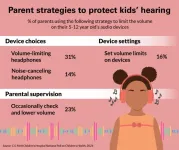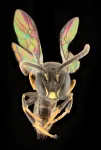In a study in today’s (Monday Feb. 26) Nature Human Behavior, scientists delve into the world of chemical neuromodulators in the human brain, specifically dopamine and serotonin, to reveal their role in social behavior.
The research, conducted in Parkinson's disease patients undergoing brain surgery while awake, homed in on the brain’s substantia nigra, a crucial area associated with motor control and reward processing.
Led by Virginia Tech computational neuroscientist Read Montague, the international team revealed a previously unknown neurochemical mechanism for a well-known human tendency to make decisions based on social context — people are more likely to accept offers from computers while rejecting identical offers from human players.
Insight from an ultimatum game
In the study, four patients receiving deep brain stimulation surgery for Parkinson’s disease were immersed in the “take it or leave it” ultimatum game, a scenario where they had to accept or reject varying splits of $20 from both human and computer players. For instance, one player may propose to keep $16, whereas the patient gets the remaining $4. If the patient rejects the split, then neither of them receives anything.
“You can teach people what they should do in these kinds of games — they should accept even small rewards as opposed to no reward at all,” said Montague, the Virginia Tech Carilion Mountcastle professor with the Fralin Biomedical Research Institute at VTC and the senior author of the study. “When people know they're playing a computer, they play perfectly, just like mathematical economists – they do what they should do. But when they're playing a human being, they cannot help themselves. They are often driven to punish the smaller bid by rejecting it.”
Dopamine-serotonin dance
The idea that people make decisions based on social context is not a new one in neural economic games. But now, for the first time, researchers show the impact of the social context may spring from the dynamic interactions of dopamine and serotonin.
When people make decisions, dopamine seems to closely follow and react to whether the current offer is better or worse than the previous one, as if it were a continuous tracking system. Serotonin, meanwhile, appears to focus only on the current value of the specific offer at hand, suggesting a more case-by-case evaluation.
This fast dance happens against a slower backdrop, where dopamine is overall higher when people play other human beings – in other words, when fairness comes into play. Together, these signals contribute to our brain's overall assessment of value during social interactions.
“We are shining a spotlight on various cognitive processes and finally receiving answers to questions in finer biological detail,” said study shared first author Dan Bang, associate professor of clinical medicine and Lundbeck Foundation Fellow at Aarhus University in Denmark, and an adjunct associate professor at the Fralin Biomedical Research Institute.
“Dopamine levels are higher when people interact with another human as opposed to a computer,” Bang said. “And here it was important that we also measured serotonin to give us confidence that the overall response to social context is specific to dopamine.”
Seth Batten, a senior research associate in Montague’s lab and shared first author of the study, built the carbon-fiber electrodes that were implanted in patients receiving Deep Brain Stimulation surgery and helped collect the data at the Mount Sinai Health System in New York.
“The unique twist with our method is that it allows us to measure more than one neurotransmitter at a time — the impact of that should not be lost,” Batten said. “We’ve seen these signaling molecules before, but this is the first time we’ve seen them dance. No one has ever seen this dance of dopamine and serotonin in a social context before.”
Teasing out the meaning of the electrochemical signals recorded from patients in surgery was a major challenge that took years to solve.
“The raw data that we’re collecting from patients isn’t specific to dopamine, serotonin, or norepinephrine – it’s a mixture of those,” said Ken Kishida, a co-author of the study and an associate professor of translational neuroscience, and neurosurgery, at Wake Forest University School of Medicine. “We’re essentially using machine-learning type tools to separate what's in the raw data, understand the signature, and decode what's going on with dopamine and serotonin.”
In the Nature Human Behavior study, researchers showed how the rise and fall of dopamine and serotonin are intertwined with human cognition and behavior.
“In the model organism world, there is a candy store full of fantastical techniques to ask biological questions, but it's harder to ask questions about what makes you, you,” said Montague, who is also the director of the Center for Human Neuroscience Research and the Human Neuroimaging Laboratory of the Fralin Biomedical Research Institute.
Addressing Parkinson’s
“At some point, after we have evaluated enough people, we're going to be able to address the Parkinson’s disease pathology that's given us this window of opportunity,” said Montague, who is also a professor in the Virginia Tech College of Science.
In Parkinson’s disease, a significant loss of dopamine-producing neurons in the brainstem is a key characteristic that usually coincides with the onset of symptoms.
This loss impacts the striatum, a brain region heavily influenced by dopamine. As dopamine diminishes, serotonin terminals begin to sprout, revealing a complex interaction, as observed in rodent models.
“Already there is pre-clinical evidence that the attrition of the dopamine system is telling the serotonin system, ‘Hey, we’ve got to do something.’ But we’ve never been able to watch the dynamics,” Montague said. “What we’re doing now is the first step, but one would hope that once we get up to hundreds of patients, we'd be able to relate this to symptomatology and make some clinical statements about the Parkinson’s pathology.”
In that respect, researchers said a window is opening to learn about a wide range of brain disorders.
“The human brain is like a black box,” Kishida said. “We have developed one more way to look inside and understand how these systems work and how they have become affected by various clinical conditions.”
Michael Friedlander, executive director of the Fralin Biomedical Research Institute and a neuroscientist who was not involved in the study, said, “This work is changing the entire field of neuroscience and our ability to query the human mind and brain — with a technology that was just not even imagined not many years ago.”
Psychiatry is an example of a medical field that could benefit by this approach, he said.
“We have an enormous number of people in the world who suffer from a variety of psychiatric conditions, and, in many cases, the pharmacological solutions do not work very well,” said Friedlander, who is also Virginia Tech’s vice president of health sciences and technology. “Dopamine, serotonin, and other neurotransmitters are in some ways intimately involved with those disorders. This effort adds real precision and quantitation to understand those problems. The one thing I think we can be sure of is this work is going to be extremely important in the future for developing treatments.”
More than a decade in the making
The effort to measure neurotransmitters in real-time in the human brain began more than 12 years ago when Montague assembled a team of experts who “think about thinking, a lot.”
In first-of-their-kind observations in the human brain the scientists published in Neuron in 2020, researchers revealed dopamine and serotonin are at work at sub-second speeds to shape how people perceive the world and take action based on their perception.
More recently, in a study published in October in the journal Current Biology, the researchers used their method of recording chemical changes in awake humans to gain insight into the brain’s noradrenaline system, which has been a longtime target for medications to treat psychiatric disorders.
And, in December in the journal Science Advances, the team revealed that fast changes in dopamine levels reflect a specific computation related to how humans learn from rewards and punishments.
“We've made active measurements of neurotransmitters multiple times in different brain regions, and we have now reached the point where we're touching on crucial elements of what makes us human beings,” Montague said.
END





